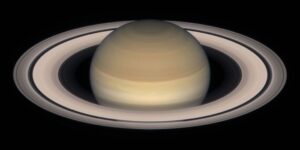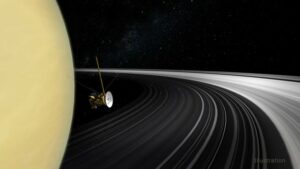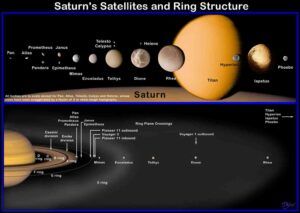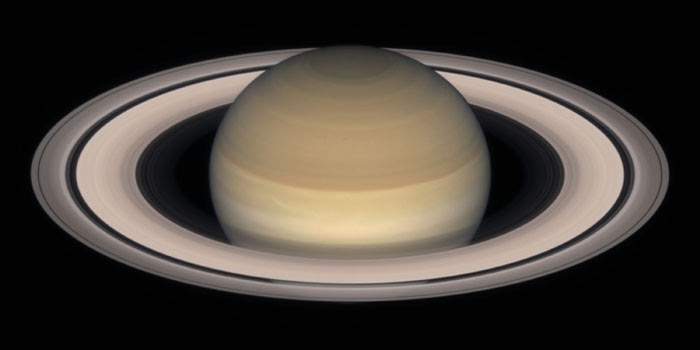*This post may contain affiliate links. This means we may make a commission if you purchase an item using one of our links*
Saturn is one of the largest planets in our solar systems, the 6th planet orbiting the sun and is most well known for the rings orbiting it.
Of course the main reason you’re here is to learn how you can see Saturn with a telescope and despite it’s distance from Earth, with the right equipment and resources, it’s actually not as hard to do as you may think.
In order to see Saturn, first you’ll need to locate it. This can be accomplished by using Stallerium or your mount if its computerised. The next thing you’d need is a 4 inch telescope with an eyepiece that magnifies 25x magnification. This simply see an outline of Saturn and its rings but, for the best views and to see more detail, you’ll need a telescope that’s 6 inch plus that allows for a 200x magnification or more.
The weather also plays a part on if you’ll get a great or poor experience observing Saturn. Throughout the rest of this article I’ll break down how you can view Saturn along with what you should look out for when observing the ringed planet
What Is Saturn?
Table of Contents

Saturn is the 6th planet from our Sun, is a gas giant and is the second largest planet in our solar system. The planet has a polar diameter of 67,560 miles, when compared to Earth’s 3,963 miles, making Saturn 17 times bihger than Earth but in terms of mass density, Saturn is 95 times that of earth.
Jupiter is of course significantly larger than Saturn considering it can fit every planet within our solar system inside however , this isn’t to say Saturn isn’t huge!
The planet of course is most well known for its ring, it’s pale yellow atmosphere and its moons, one really well known one being Titan. The planet is 890,424,928 miles away from the Sun which results in its orbit around the star accumulating to 29 years.
Saturn much like Jupiter and the sun is mainly composed of helium and hydrogen meaning it can get really hot the closer you get to the surface, with experts believing the core may reach temperatures as high as 11,700 degrees Celsius however, as the planet is a very large distant away from the Sun, its atmospheric temperature is estimated to be a very cold -179 degrees Celsius.
Can You See Saturn Without A Telescope
You can actually see Saturn without a telescope however, as is to be expected you won’t be seeing anything more than just a bright star like object in the night sky. In fact Saturn is the last of the 5 closest planets to the sun that we can observe without requiring a telescope to do the job.
It’s angular diameter ranges from 14.5″ to 20.1″ which makes it just big enough to be seen without a telescope, appearing as a pale yellow object in the horizon.
Nevertheless, a telescope is obviously the best way to observe the yellow ringed planets finer details and now I’ll mover to what you’d need to do in order to accomplish this.
How To Locate Saturn
If you wish to locate Saturn, the best way to do it would be through software like Stallerium, where you can simply input your location and whether Saturn is visible on the night you decide to go observing or if you have one, use a computerised GoTo mount to automatically lock onto the planet.
If you’re aiming to view it without a telescope, you’ll first need to find out if is observable from where you reside. Saturn tends to be the least observable near the end of December till January. The Planet appears to be observable from April – September but, the best times to observe it appear to be around the summer months with the best month being July.
After September the visibility of the planet does begin to decrease until the end of December.
At its brightest, the planet is clearly visible so it shouldn’t be too difficult to find and lock onto it. However, for its worst visibility months, late December until early March, it’ll only be visible for a very short period of time which is why you should start your Saturn observation sessions anywhere between April – September.
What Equipment Do You Need To See Saturn
Saturn can technically be observed using a smaller telescope however, you’ll still need great conditions to accurately lock onto the planet and observe it.
At 50x you’ll be able to make out Saturn, with the shape of its rings and yellow colour visible however, the image will only be like a yellow blob.
A 6 inch device should allow for a higher magnification which means (depending on the quality) you’ll be able to achieve a max theoretical 300x magnification. At 200x you’ll be able to see differences in the surface colours and separation in the rings around.
And of course the more power you can bring out of your telescope, the better the visuals but, in my research it appears 200x magnification is ideally the magnification you’d want to achieve in order to have a decent session observing the ringed gas giant.
What Should You Look Out For When Observing Saturn
When observing Saturn there are many interesting things to look out for so in this section I’ll cover a few stand out features you should try to observe the, next time Saturn is visible in the horizon.
Saturn’s Surface

Saturn’s surface is a pale yellow colour and much like Jupiter it also has cloud bands around it with regular storms raging however, you’ll need a very powerful system to observe these cloud bands.
You can also use use telescope filters such as the 38A (dark blue) and 80A (blue) to squeeze a bit more detail of the surface if your aiming to observe it.
The Rings

Saturn’s rings can be made out from a distant but, with a higher quality telescope you’ll be able to make out the different sections of the rings.
There appears to be a fair few rings orbiting the planet which can be seen at different brightness levels. If you’re unfamiliar with what the rings are made of, it’s a combination of billions of pieces of ice, dust and rocks. These particles can be very tiny, like a single grain or even be as big as rocks the size of a house.
It’s very unlikely that you’ll be able to make out any singular huge pieces of debris floating around the planet but, with a decent sized telescope making out 8 separate rings may be possible to do.
The only instrument that can make out more rings, around 30 rings, is the cassini spacecraft orbiting Saturn.
The Different Moons

Saturn has a ton of moons orbiting it, in fact in terms of how many have been discovered so far, it’s more than the 79 Jupiter has. Saturn currently is known to have 82 moons.
It’s most famous moon by far is Titan, which is Saturn’s largest moon. This moon is famous for having a dense atmosphere, and being the only known celestial entity in space, other than Earth, where clear evidence of liquid on the surface has been examined.
It’s also the second largest moon in our solar system just behind one of Jupiter’s moons, Ganymede. As Titan is the biggest moon orbiting Saturn and fairly bright, it’s fairly easy to spot it however, the other moons are a lot more complicated to observe but, with minimal light pollution it may be possible to view 5 of the planets other larger moons.
Summary
Hopefully this article has provided you with enough information to get started on your next observation session on Saturn.
Saturn is a wonderful planet to observe with quite a few enticing things to see from the rings, it’s moons and even cloud bands, no wonder many amateur and veteran astronomers enjoy viewing this gas giant and I’m sure you will too!

